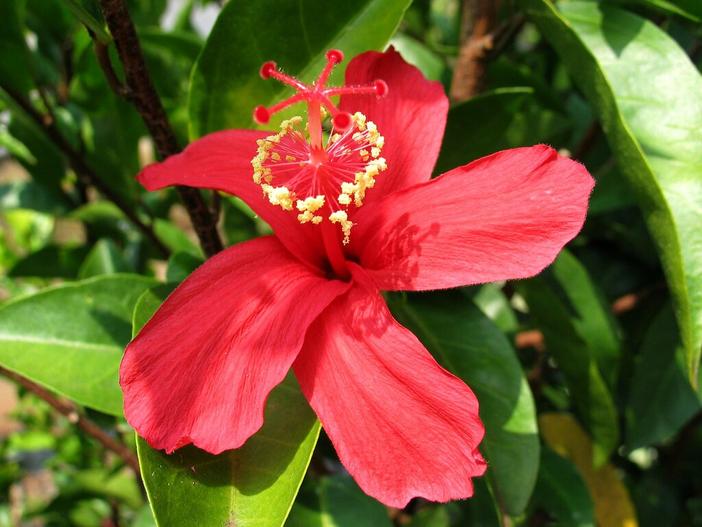Red Rosemallow
(Hibiscus kokio)
Red Rosemallow (Hibiscus kokio)
/
/

David Eickhoff
CC BY 2.0
Image By:
David Eickhoff
Recorded By:
Copyright:
CC BY 2.0
Copyright Notice:
Photo by: David Eickhoff | License Type: CC BY 2.0 | License URL: https://creativecommons.org/licenses/by/2.0/ | Uploader: D.Eickhoff | Publisher: Flickr





















Estimated Native Range
Summary
Hibiscus kokio, commonly known as Red Rosemallow, is an evergreen shrub endemic to the Hawaiian Islands, where it thrives in the understory of dry to mesic forests and occasionally in shrublands at lower elevations. It typically grows to a height of 5-8 feet (1.5-2.4 meters) and a width of 6-9 feet (1.8-2.7 meters), with a bushy, rounded form. The Red Rosemallow is notable for its vibrant, showy red flowers that bloom throughout the year, adding a splash of color to the garden. The flowers are hibiscus-like in form, with five petals and prominent staminal columns.
This plant is valued for its continuous flowering habit and the tropical ambiance it brings to landscapes. It is often used in residential gardens, botanical gardens, and as an ornamental feature in public spaces. Red Rosemallow is relatively low-maintenance, requiring minimal water once established, making it suitable for xeriscaping. It prefers well-draining soils and can tolerate a range of soil types, from clay to loam. While it thrives in full sun, it can also do well in part shade, which mimics its natural understory habitat. There are no major disease problems, but it may be susceptible to pests such as aphids and whiteflies. It is not known to be invasive and does not have aggressive roots, making it a safe choice for planting near structures.CC BY-SA 4.0
This plant is valued for its continuous flowering habit and the tropical ambiance it brings to landscapes. It is often used in residential gardens, botanical gardens, and as an ornamental feature in public spaces. Red Rosemallow is relatively low-maintenance, requiring minimal water once established, making it suitable for xeriscaping. It prefers well-draining soils and can tolerate a range of soil types, from clay to loam. While it thrives in full sun, it can also do well in part shade, which mimics its natural understory habitat. There are no major disease problems, but it may be susceptible to pests such as aphids and whiteflies. It is not known to be invasive and does not have aggressive roots, making it a safe choice for planting near structures.CC BY-SA 4.0
Plant Description
- Plant Type: Tree, Shrub
- Height: 5-7.5 feet
- Width: 6-9 feet
- Growth Rate: Moderate
- Flower Color: Red
- Flowering Season: Winter, Spring, Summer, Fall
- Leaf Retention: Evergreen
Growth Requirements
- Sun: Full Sun, Part Shade
- Water: Medium, Low
- Drainage: Medium
Common Uses
Bee Garden, Bird Garden, Butterfly Garden, Hummingbird Garden, Low Maintenance, Showy Flowers
Natural Habitat
Dry to mesic forests and occasionally in shrublands at lower elevations
Other Names
Common Names: Koki’O ’ula’ula, Koki`O Ula
Scientific Names: , Hibiscus kokio, Hibiscus kokio var. pukoonis,
GBIF Accepted Name: Hibiscus kokio Hillebr. ex Wawra